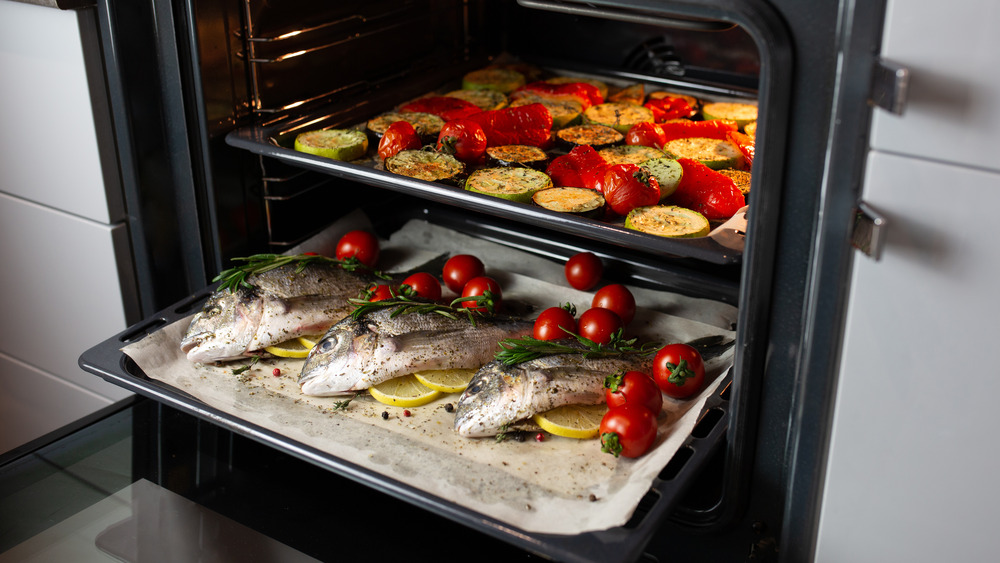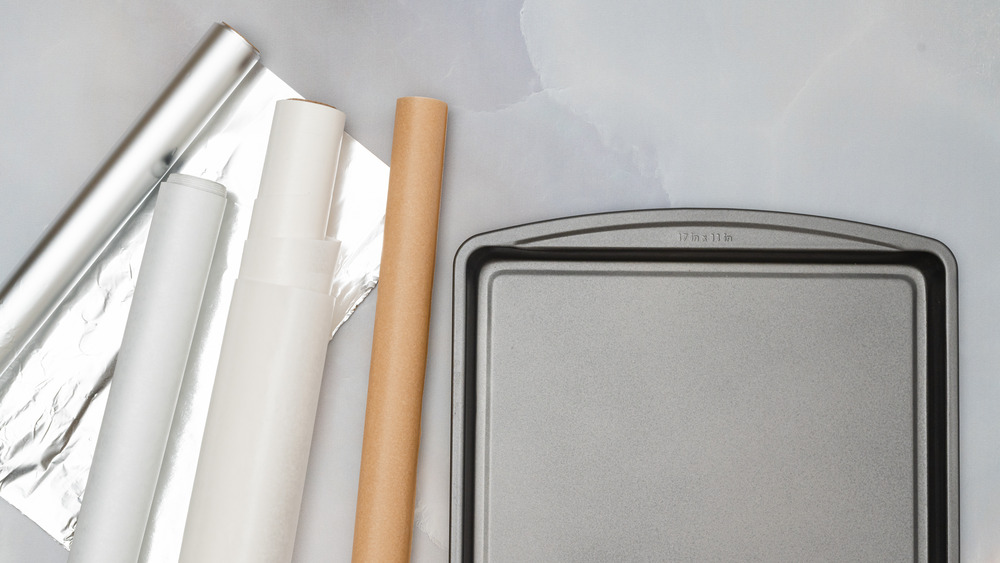Here's Why You Should Never Use Wax Paper Instead Of Parchment
Whether you're cooking meats, roasting vegetables, or baking cookies, you have probably come across recipes that call for parchment paper. We understand kitchen substitutions happen all the time — like swapping olive oil for butter, maple syrup for molasses, or chickpea liquid for egg whites – but if you run out of parchment paper, substituting wax paper might not only make your food taste worse, it also could be dangerous.
Wax paper, like its name suggests, is coated with soybean or paraffin wax (via Greatist) – so if you put it in the oven, the wax might melt off and the paper could catch fire. Parchment paper, on the other hand, is coated with silicone and is heat-resistant up to 420 degrees Fahrenheit. Taste of Home notes that while parchment paper might get darker in the oven, it will not melt or burn, so it is a much better choice for cooking with heat.
The coatings are not the only difference between the two food-safe papers. In fact, Greatist says the paper itself is processed differently. The outlet reports that the Reynolds brand, for example, dips their parchment paper in an acid bath before passing it through a heat treatment, which strengthens it. The company's wax paper, however, does not go through this process and is just compressed to make it translucent before the wax is applied.
So if you're out of parchment, wax paper is not a good replacement — instead, the Food Network recommends reaching for aluminum foil or a silicone baking mat.
So what are wax and parchment paper good for?
Wax paper is helpful for storing things at cold or room temperatures, says Greatist. You can lay out a large piece of wax paper to let homemade chocolate-coated treats cool, roll out dough between two sheets, or use smaller squares to separate burger patties in the freezer or wrap sandwiches in your lunchbox. Wax paper's smooth and moisture-resistant surface also makes it handy for food prep. Taste of Home recommends grating cheese or sifting flour directly onto wax paper, then rolling it into a funnel to cleanly pour the ingredients into a mixing bowl.
You can use parchment paper in just as many ways. Martha Stewart, for example, recommends using it to line baking sheets so cookies will not stick. The Pioneer Woman also points out that parchment paper creates a thin layer of air between the pan and your food, which helps spread heat evenly and avoid oven hot spots. Parchment paper is also used in two traditional French techniques: roasting en papillote and covering stews with a cartouche. Preparing delicate foods like fish en papillote, or wrapped in a parchment paper packet, is an effective way to use steam to cook gently, says The Spruce Eats. Cook's Illustrated explains that a cartouche is a piece of parchment paper cut into a round shape and laid over stews and braises, which gives the benefits of both lid-on and off cooking without the drawbacks of either.
Now that you know how to use wax paper and parchment when cooking, you'll never select the wrong one again.

